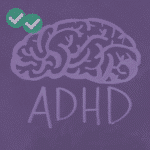
If you’re preparing to take on the GRE and have concerns about how your disability might affect your test day, there’s good news. The GRE is committed to providing an equitable and inclusive testing environment for all test-takers, including those with disabilities. Let’s explore how disability accommodations work in the GRE and how you can make the most of them.
Understanding disability accommodations
Disability accommodations are modifications made to the testing conditions and format to support individuals with disabilities during the GRE. These accommodations cater to a variety of disabilities, including physical impairments, learning disabilities, attention-related disorders, and more. They’re designed to ensure that every test-taker has an equal opportunity to demonstrate their abilities.
Without the right accommodations, standardized tests like the GRE can pose significant challenges for individuals with disabilities. These accommodations are not about providing an unfair advantage; rather, they aim to create an equal playing field for all test-takers.
Leveling the playing field
Accommodations are all about fairness. They ensure that you have just as much of a chance to shine as anyone else. They provide the support you need to fully engage with the test. When the GRE offers accommodations, it sends a powerful message: All students, disabilities or not, are valued. It’s a step towards making the educational system more inclusive and diverse.
Knowing you have the support you need can do wonders for your self-esteem. With accommodations, you can focus on showing off your knowledge and abilities, leading to a more positive testing experience.
How to apply for disability accommodations
Securing disability accommodations for the GRE involves a few steps:
- Submit your request early: Begin the process well in advance to allow sufficient time for the accommodation request and review process (approximately six weeks, and another six if you need to submit additional information).
- Prepare Documentation: You’ll need detailed documentation from appropriate professionals (such as doctors or educators) to confirm your disability and specify the required accommodations, as well as any other relevant documents.
- Submit Your Request: The easiest way to do this is through your ETS account, but there are other options such as email, mail or courier service.
- Await Review: The Educational Testing Service (ETS), which administers the GRE, will evaluate your request to ensure the proposed accommodations align with your needs.
- Approval & Test Scheduling: Once ETS approves your request, you will receive a confirmation email, and then you will be able to schedule your GRE test with your sanctioned accommodations.
Available accommodations
ETS offers a variety of accommodations to meet diverse needs, including, but not limited to:
- Extended testing time
- Extra breaks
- Accommodations for computer-delivered tests (such as different keyboards, screen readers or screen magnification, for example)
- Assistance in the form of a human reader, scribe or interpreter
- Assistance for note taking
- Alternate test formats
Promoting awareness
The broader GRE community plays a vital role in fostering understanding and advocating for disability accommodations. It’s essential for educational institutions, test centers, and policymakers to work together in creating an inclusive testing environment.
In summary, disability accommodations are integral to providing an equitable and inclusive GRE experience. By offering appropriate accommodations, the GRE enables candidates with disabilities to demonstrate their full potential and compete on equal footing with their peers. With the GRE’s commitment to making the test accessible and your own efforts to secure and use approved accommodations, you’re all set to conquer the GRE and chase your dreams of grad school success.





